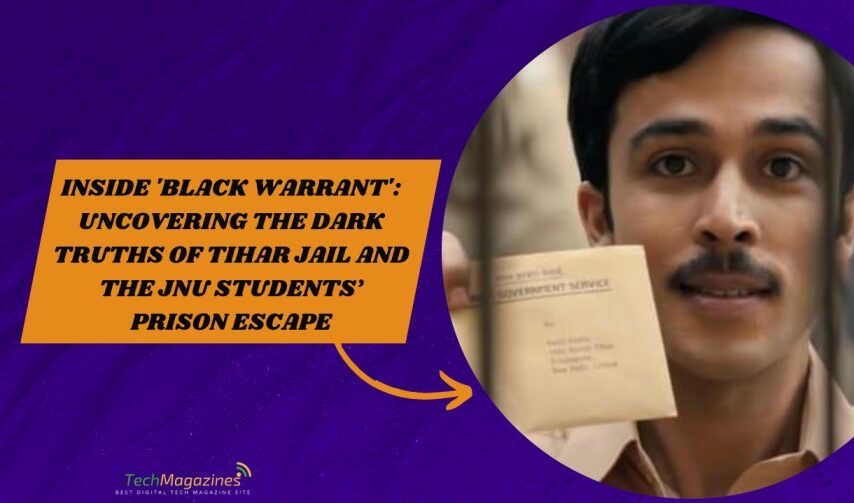Vikramaditya Motwane’s Black Warrant isn’t just a story—it’s a reality check that’s hard to stomach. As wild as the events may seem, most of them actually happened. Sunil Gupta, author of Black Warrant: The Confessions of a Tihar Jailor, doesn’t mince words. His book pulls no punches, naming names, exposing the cracks in the prison system, and unapologetically suggesting fixes.
The question is: Were those jaw-dropping scenes of corruption and chaos pure dramatization, or is truth really stranger than fiction? Let’s untangle the facts from the spectacle and find out.
The Startling Reality of Ranga’s Execution
Ranga and Billa’s execution was the first that Sunil Kumar Gupta ever witnessed, and let me tell you, it wasn’t the sort of event you walk away from unchanged. After watching the scene unfold, I assumed the creators had sprinkled in some dramatic flair for the sake of Black Warrant. Turns out, they didn’t need to. The most shocking part? Ranga was alive—alive—when a doctor checked his pulse nearly two hours after the hanging. How? I don’t know. Gupta doesn’t either. But he mentions in his book that the jail officials were as stunned as anyone else.
Then there’s the murky question of guilt. It’s true that there was never enough evidence to determine Billa and Ranga’s roles with certainty. Both insisted the other had committed the assault, though their behavior in prison made officers lean toward Billa being the honest one. Still, the doubt lingered, heavy and unresolved.
As for the journalists? Unlike the single, dramatic interview scene in Black Warrant, reality was a bit messier. A group of them came to speak with the men, but Ranga refused outright. Gupta, for his part, knew one of them was telling the truth. But when the court’s judgment comes down like a gavel on stone, truth doesn’t always matter anymore.
That day marked a turning point for Gupta. He didn’t say it outright, but you can feel it in his words: witnessing something so grim, so final, leaves a scar. Some parts of him, like the lingering questions about justice and truth, would never quite heal.
Charles Sobhraj: The Unchallenged King of Tihar Jail
When Sunil Gupta joined Tihar Jail as an assistant superintendent, he expected a desk and maybe some paperwork—not confusion. Instead, his superior greeted him with a blank stare, saying there were no vacancies and no memo about his arrival. Awkward, right? But the real plot twist walked in soon after, wearing sharp clothes and a disarming smile. Gupta thought the man was a senior official. Turns out, it was none other than Charles Sobhraj—the infamous “Bikini Killer.”
Sobhraj wasn’t just an inmate in the ‘80s; he was practically Tihar’s uncrowned king. His life behind bars was anything but grim. With enough bribes to grease the system, Charles lived lavishly—even by prison standards. Fancy meals, a steady stream of visitors (mostly women, ranging from journalists to academics), and a swagger that screamed “untouchable.” It’s almost absurd, but Gupta confirms it: Tihar officials even turned to Charles for help, knowing his Rolodex was stacked with connections that extended far beyond those prison walls.
And yes, his infamous 1986 escape really happened. After celebrating his birthday with unsettling ease, Sobhraj drugged the guards—classic Charles move—and walked right out. If it weren’t so audacious, it might almost be comedic. For Charles, prison was less about punishment and more about finding new ways to outfox the system, all while enjoying the ride.
A Mass Escape: The JNU Students’ Daring Breakout
In his book, Sunil Gupta recounts a jaw-dropping incident from 1983: roughly 180 JNU students escaped from Tihar Jail. While the exact number might be debatable, the breakout itself? Oh, it happened. The root of the chaos, as shown in the Netflix series, was a glaring security lapse tied to the B-class cells. These weren’t your typical prison quarters—prisoners there could casually chat with visiting family members, no barricades or glass walls in sight.
Here’s where things get clever. Visitors entering the jail had stamps on their hands, but thanks to Delhi’s heat and a bit of sweat, those stamps were easy to transfer onto the wrists of the inmates. And that’s exactly what happened. By the time people started walking out, the guards—apparently too relaxed to keep count—failed to notice that three times as many individuals were leaving as had entered.
It’s worth noting that back then, technology was a distant dream compared to today’s biometric systems. But this wasn’t just luck or laxity. It was a meticulously crafted plan, executed with audacity and precision. That day, Tihar—the fortress-like symbol of security in Asia—proved that even the most imposing walls couldn’t stand up to human ingenuity.
The Birth of a Legal Aid Revolution: Fighting for the Forgotten
The case of Ujagar and Kartar Singh is a tragic tale rooted in real events. Their death sentence became a pivotal moment for Sunil Gupta, inspiring him to champion the rights of underprivileged inmates. Convicted for murdering Vidya Jain, the two men first caught Gupta’s attention when, after ten years of incarceration, they asked to be transferred to separate wards—having grown weary of seeing each other daily.
Dr. Jain, Vidya’s husband, orchestrated her murder. Desperate to be with his lover, he paid Kartar and Ujagar just 500 rupees to kill his wife. Yet the harshest irony lay in the outcome: while Jain escaped the death penalty, the men he hired were deemed too immoral to remain in society. This stark injustice became a haunting example of a system failing those it condemned.
Sunil Gupta saw the ugly truth most ignored: the prisons weren’t full of criminals—they were full of the poor. Men rotted away behind bars, not because they couldn’t win bail, but because they couldn’t scrape together enough to pay for it. It wasn’t justice. It was ransom disguised as law.
By 1983, Gupta had had enough. He rallied support and launched a legal aid program, a lifeline for those drowning in the system’s indifference. This wasn’t just paperwork; it was rebellion. Over the years, he fought to inject humanity into a machine built to grind people down, shielding inmates from corruption so entrenched it might as well have been carved into the prison walls. Gupta didn’t just help—they say he gave the forgotten a reason to believe in something better.
Conclusion
While Sobhraj enjoyed the best prison life in the 1980s, 180 JNU students managed to give a Hollywood touch to the escape from Tihar Jail. It is unclear if Sunil Gupta planned on having a career that involved dealing with half-dead executees and smooth-talking serial killers, but he became a prison reform activist. His legal aid initiative showed that one can learn that the best ideas stem from the worst issues. As it happens, even in the sphere of criminal activity and imprisonment, it is possible to undergo a transformation for the better – but the guards who were given a dose of Sobhraj’s drugs would probably disagree.
FAQs
Q1: Was Charles Sobhraj really living it up in Tihar like a prison resort influencer?
A: Sobhraj transformed Tihar into his own playground in the 1980s and used to order sumptuous meals and women visitors that would make any red carpet look pale. It got to the point that the prison officials would come to him for a favor. The cherry on top? He had his birthday in jail, then put something in the guards’ food and walked out as if he was going home from a ball.
Q2: How did 180 JNU students pull off a prison break that would make Hollywood jealous?
A: The students were able to learn that visitor stamps could be passed like temporary tattoos and used this to mess with the head count. While today’s prisons employ biometrics, back then, security was as complex as “duck, duck, goose.” Three times as many people left the building as entered, and no one blinked an eye. Ocean’s Eleven, eat your heart out!
Q3: What’s the deal with Ranga surviving his own execution?
A: Probably one of the most embarrassing moments in execution history, Ranga decided to come back to life and perform an encore – after being hanged for two hours. Not even Sunil Gupta who saw this supernatural event could try to explain it. The doctor checking for a pulse probably needed a pulse check himself! It is the sort of twist that would make M Night Shyamalan turn to the camera and say ‘Come on, that’s a bit much’.








